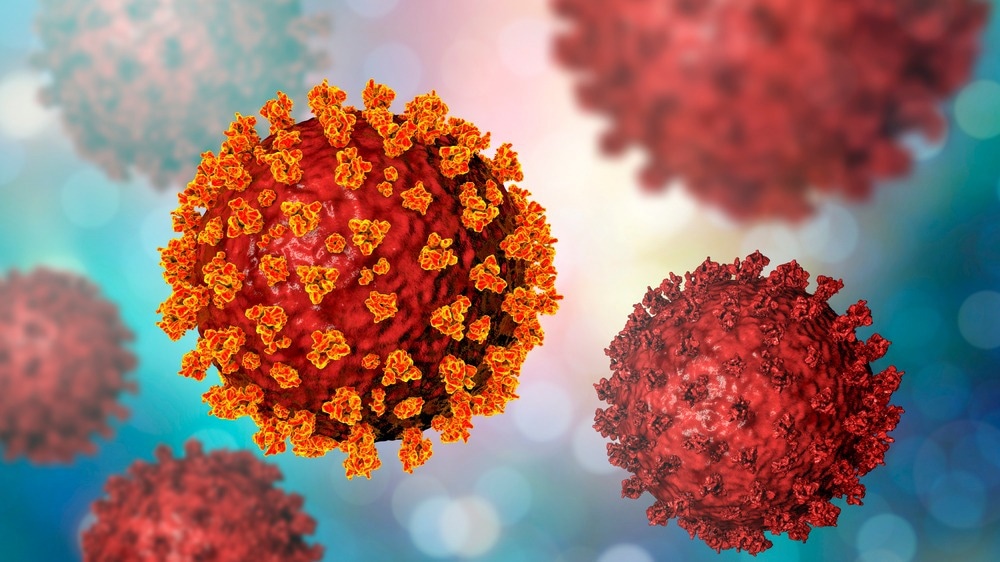In a recent study posted to the bioRxiv* preprint server, researchers explored the efficiency of a macrocyclic peptide in inhibiting the severe acute respiratory syndrome coronavirus 2 (SARS-CoV-2) spike protein.
 Study: A broad-spectrum macrocyclic peptide inhibitor of the SARS-CoV-2 spike protein. Image Credit: Kateryna Kon/Shutterstock
Study: A broad-spectrum macrocyclic peptide inhibitor of the SARS-CoV-2 spike protein. Image Credit: Kateryna Kon/Shutterstock

 *Important notice: bioRxiv publishes preliminary scientific reports that are not peer-reviewed and, therefore, should not be regarded as conclusive, guide clinical practice/health-related behavior, or treated as established information.
*Important notice: bioRxiv publishes preliminary scientific reports that are not peer-reviewed and, therefore, should not be regarded as conclusive, guide clinical practice/health-related behavior, or treated as established information.
Background
The coronavirus disease 2019 (COVID-19) pandemic has caused significant social and health repercussions. Due to immune-evasive SARS-CoV-2 Omicron sublineages, infection rates remain high despite the availability of vaccinations. Hence, antivirals with a broad spectrum of activity are required to protect against developing variants and potential pandemics.
About the study
In the present study, researchers reported the discovery of a 17-amino acid macrocyclic peptide able to bind to a conserved area of the SARS-CoV-2 spike (S) protein.
The team assembled two peptide libraries containing nearly 1012 distinct sequences using the random non-standard peptide integrated discovery (RaPID) technique. During translation, peptides are tagged with their encoding messenger ribonucleic acid (mRNA) and cyclized by recoding methionine into N-chloroacetylated L-tyrosine or D-tyrosine, which can cyclize with a cysteine residue present after 15 random codons encoding any of the remaining 19 L-amino acids.
By screening these libraries using prefusion-stabilized SARS-CoV-2 wild-type (WT) S ectodomains immobilized on magnetic beads, binding peptides were retrieved. This was followed by amplifying their complementary DNA (cDNA) to create input mRNA for the next round.
After five iterative cycles of enrichment, the team added fetal calf serum before the next two rounds of incubation with the spike protein in order to increase serum stability. In parallel, the third-round input was panned using spike S1B domain, comprising the angiotensin-converting enzyme-2 (ACE-2) receptor-binding site.
Furthermore, high throughput next-generation sequencing was performed for all the enriched libraries. This led to the detection of sequences that were subsequently counted, aligned, and clustered based on sequence similarity to select 15 possible cyclic peptide ligands by solid-phase peptide synthesis. The activity of 10 purified synthetic cyclic peptides was then evaluated in a pseudovirus assay performed for the detection of the SARS-CoV-2 WT strain.
By evaluating cytopathic effects in HEK293 ACE2+ transmembrane serine protease 2 (TMPRSS2)+ cells, the team estimated the Wuhan strain's ability to suppress actual viral infection. To comprehend the interactions between peptide S1b3inL1 and the SARS-CoV-2 S glycoprotein, hydrogen-deuterium exchange (HDX) footprinting was performed on the S1 protomer. Cryo-electron microscopy (cryo-EM) single-particle analysis was also conducted on 6P-stabilized spike ectodomains incubated with S1b3inL1 to provide a comprehensive knowledge of the binding site as well as the macrocyclic peptide structure.
Results
At submicromolar levels, two of the studied sequences, namely S1b3inL1 and SARS2L1, exhibited pseudovirus neutralization activity. Using either trimeric spike ectodomains or only the S1B-domain, a protein thermal shift experiment demonstrated that S1b3inL1 binds to the SARS-CoV-2 receptor-binding domain (RBD). Only the whole trimeric spike of SARS2L1 exhibited a thermal shift, suggesting that it binds with a region outside of S1B or identifies a quaternary epitope. Numerous other non-inhibitory peptides exhibited a temperature shift, confirming their binding activity with non-inhibitory areas.
An enzyme-linked immunosorbent test (ELISA) determined that none of the active peptides blocked spike binding to ACE2, indicating that both may be binding to an auxiliary location. The peptide S1b3inL1 demonstrated good efficacy with a half maximal effective concentration (EC50) of 5.8 M, whereas the analogous peptide S1b3inL4 exhibited less potent neutralization of the virus.
Although SARS2L1 significantly inhibited viral entry, the EC50 curve did not plateau due to solubility limits. Based on these findings, the researchers concentrated on elucidating the potentially unique mode of action of S1b3inL1.
HDX footprinting showed a potential binding site comprising residues 388 to 399, 421 to 431, and 511 to 520, which are localized in a region of S1B distant from the ACE2-interacting region. The prefusion spike has two S1B domains having an open conformation and one having a closed conformation, as determined by three-dimensional categorization. Subsequent processing steps revealed a reconstruction with a global resolution of 3.2 Å, indicating an additional density consistent with the macrocyclic peptide size on the three S1B domains. Due to conformational instability, the two peptide-bound S1B domains having an open conformation were poorly resolved on the cryo-EM map.
Hydrophobic sidechain packing observed in the peptide core, and the hydrogen bonding between the R5 sidechain and the backbone carbonyl groups of G11 and I8 stabilized the bioactive conformation of S1b3inL1. The cyclic peptide's convex face was adjacent to residues 353, 355, 390 to 392, 426 to 430, 462 to 466, and 514 to 519, in accordance with the HDX-MS study. The binding of S1b3inL1 and the S1B domain was stabilized with the binding of the backbone hydrogen to the S1B domain residues F456, L517, and R466.
Conclusion
The study findings presented a macrocyclic peptide S1b3inL1 along with a new druggable site, exemplifying the ability of in vitro selection tools to supply alternatives to solutions offered by small compounds or biologicals. The high-resolution cryo-EM structure of S1b3inL1 presented in the study provides great insight into the binding of the antiviral cyclic peptide to the entire trimeric SARS-CoV-2 protein target.

 *Important notice: bioRxiv publishes preliminary scientific reports that are not peer-reviewed and, therefore, should not be regarded as conclusive, guide clinical practice/health-related behavior, or treated as established information.
*Important notice: bioRxiv publishes preliminary scientific reports that are not peer-reviewed and, therefore, should not be regarded as conclusive, guide clinical practice/health-related behavior, or treated as established information.